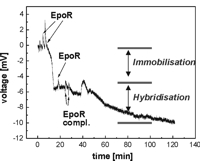
1Institute for Thin Films & Interfaces, Institute for Bio- and Chemosensors (ISG-2), Research Center Jülich, D-52425 Jülich, Germany, and
2Laboratory for Chemical Sensors and Biosensors, University of Applied Sciences Aachen, Division Jülich, D-52425 Jülich, Germany
e-mail: s.ingebrandt@fz-juelich.de
